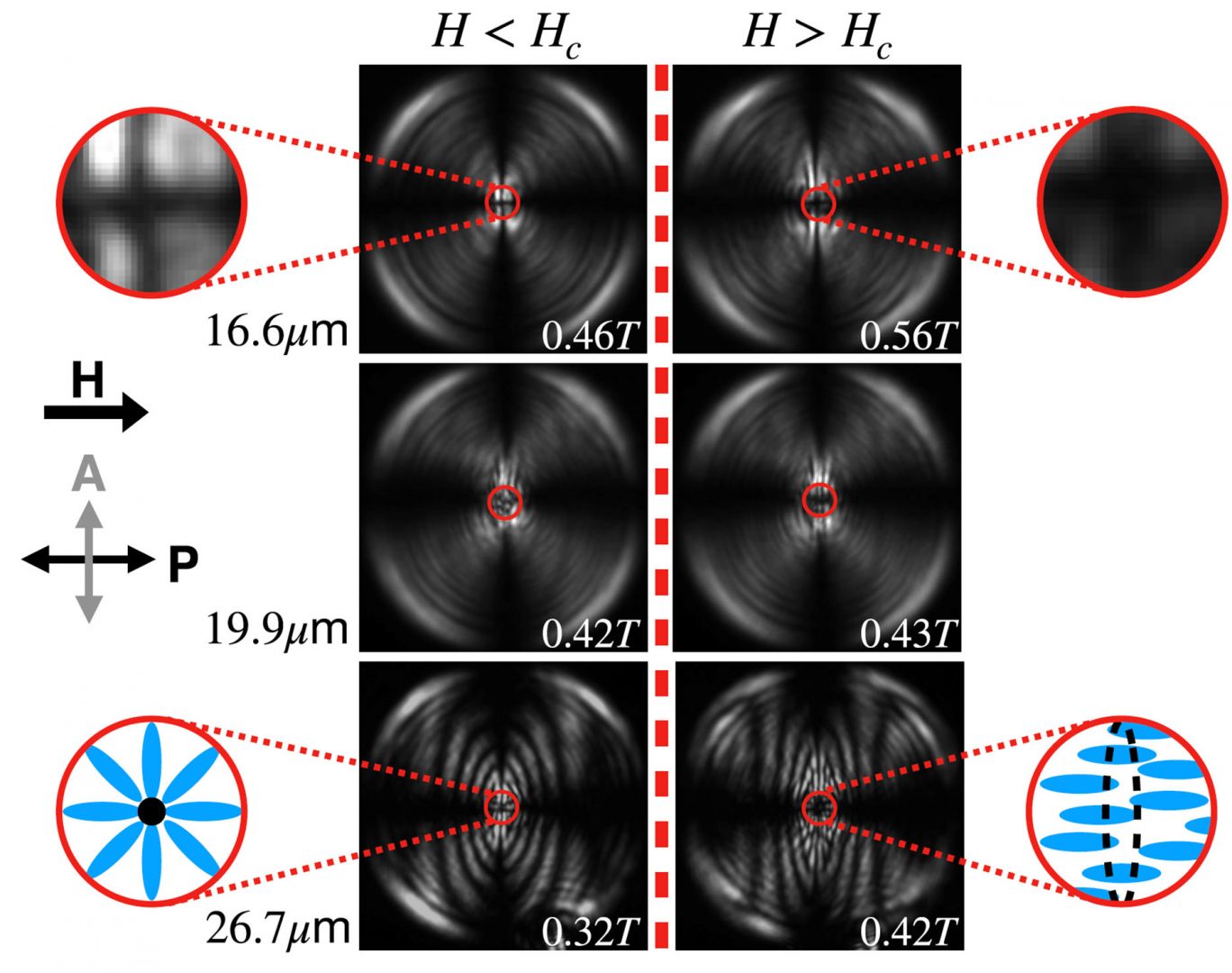
Polarized Optical Microscopy (POM) images of three nematic liquid crystal droplets (16.6, 19.9, and 26.7 μm in radius) reveal a configuration transition at a critical magnetic field. Before the transition, droplets exhibit a deformed radial state with a point defect. After the transition, droplets adopt an axial-with-defect state, featuring a ring defect. The transition is highlighted in a magnified red circle region. Simplified schematics illustrate the defect structures before and after the transition. The magnetic field strength for each frame and the orientation of the polarizer and analyzer are indicated in the images. The text in the bottom of each image indicates the field strength in Tesla.
IRG-3 researchers Yodh, Kikkawa and Collings made a significant discovery about the behavior of liquid crystals (LCs) in droplets exposed to a magnetic field. LCs are unique materials that flow like liquids but also have some order (orientational order) like crystals. In this study, the researchers focused on a specific type of LC phase called a nematic. Field-induced “switching” of nematic liquid crystals (NLCs) in planar geometries is the basis of LC displays. Here, NLCs were put in spherical drops with special molecules (surfactants) on the drop surface that align the molecules, or NLC director, perpendicular to the droplet surface and force a topological hedgehog defect to form at the drop center. Field-induced switching in this case differs fundamentally from the planar cells due to confinement geometry and the topological defect.
When a magnetic field was applied to these NLC droplets, a new transition occurred. At a critical magnetic field strength, the director configuration suddenly switched from a deformed radial pattern to an axial pattern with a ring defect. In the small region near drop center, the molecular order (director orientation) was disrupted. The researchers found that the critical magnetic field strength at which the transition occurs depends on the size of the droplets, with smaller droplets requiring stronger fields to undergo the transition. Additionally, the researchers were able to estimate the strength of the molecular anchoring at the interface between the NLC and the surrounding water using their experimental data.
This study provides new insights into the behavior of liquid crystal in droplets and magnetic fields. It could have potential applications for displays, sensors, and responsive soft materials.
Ettinger, Sophie, et al. “Magnetic-field-driven director configuration transitions in radial nematic liquid crystal droplets.” Physical Review E 108.2 (2023): 024704. https://doi.org/10.1103/PhysRevE.108.024704
